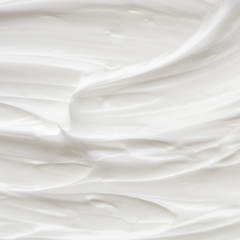
We recently took a trip to Shieling Laboratories to speak with our biochemist, Dr. Oliver Hofmann. Dr. Oliver Hofmann is the technical director of Shieling Laboratories, manufacturers of our Babu Skincare.
Dr. Hofmann shared with us some shocking misconceptions about SPF.
Did you know there is a 1.3% difference in the effectiveness of a SPF50 and SPF30 sunscreen?
Did you know that poor application of sunscreen can significantly reduce it’s sun protection factor?
Neither did we!
What is UV radiation?
To grasp the significance of sunscreen, it is important to understand what we are up against.
Sunlight, while essential for life, also brings along some not-so-friendly companions in the form of ultraviolet (UV) radiation—known troublemakers for our skin.
UV radiation is a spectrum, consisting of three types: UVA, UVB and UVC.
UVA rays, often referred to as the "aging rays," are like the subtle artists, quietly working on aging our skin cells over time. Exposure to UVA rays is like driving your car through loose gravel. Your windscreen gradually becomes visibly scratched and chipped.
UVB rays, on the other hand, are the "burning rays" that pack a bit more punch. They destroy our skin cells, giving us a painful reminder when we've had a bit too much exposure. UVB exposure is like driving your car through a rainstorm of rocks- your windscreen becomes totally destroyed. Your skin cells (or windscreen) needs replacing, requiring a lot of energy and blood flow, giving us the redness we all know too well.
UVC rays are the strongest UV rays. Fortunately, UVC rays are filtered high in the atmosphere, preventing them from reaching the ground.
A person's UV exposure is influenced by factors such as the intensity of the rays, the duration of skin exposure, and whether the skin is shielded by clothing or sunscreen.
What is SPF?
SPF, standing for sun protection factor, measures a formula’s ability to shield against UVB rays.*
Contrary to popular belief, SPF values are not linear. A common misconception about sunscreen is that a SPF50 offers double the protection of a SPF25 and that SPF30 is double that of a SPF15. Understanding the scale is crucial to making informed choices about your sun protection.
*Look for a "broad-spectrum" sunscreen. This indicates the formula protects against UVB and UVA radiation.
SPF and UVB protection
The number on the bottle and protection against the sun does not progress in a straight line; increasing rapidly and plateaus at about SPF30.
An SPF15 sunscreen filters 93% of UV light and SPF30 filters 97%- challenging the “double protection” misconception believed by many.
How is SPF measured?
SPF is determined by testing the change in redness on the skin of participants exposed to UV light.
Participants are tested with a coverage of 2mg/cm2, equivalent to the two finger rule: the application of 2 finger-sized-sausages worth of sunscreen per major section of the body.
Two fingers for the face, two fingers for your left arm, and your right. Two fingers for your upper torso, two fingers for your lower torso. Two fingers for each thigh and another two fingers for each lower leg and so on. If you perfectly apply your sunscreen according to this rule, you should apply twenty-two finger sized sausages of formula to your body.
Let us be honest here- nobody applies that much sunscreen. Can you imagine how you would feel? You would be a greasy, ghostly mess.
Observations of consumer behaviour suggest that people typically apply ¼ to ½ of the “two finger rule”.
How does sunscreen application change the SPF?
Sunscreen is acting as a film on your skin, absorbing UV radiation from the sun. To achieve the SPF listed on the bottle, you would need to apply according to the “2 finger rule”.
If an SPF50 sunscreen is applied perfectly, the film will absorb 98% of UV rays.
If half the amount of a SPF50 sunscreen is applied (still 11 fingers worth!), the absorbance of the film will also half.* You can imagine how your sun protection is affected if the film is only absorbing half the UV radiation.
This demonstrates the importance of applying vigorously and often. You are better off using a sunscreen that you enjoy putting on, and that you will put on often.
*assuming that the thickness of the film is halved.
Which SPF is best?
The key to sun protection is in the application- often and vigorous. Therefore, it is best to opt for a sunscreen that you enjoy applying.
As we discussed, the difference between a SPF30 and SPF50 is minimal.
To rank at an SPF50, a formula has to have significantly more of the filtering agents- often causing it to feel heavy and greasy. Whilst this is not inherently a bad thing, many people may be discouraged from reapplying appropriately due to the feel of the formula.
We know that the bang for buck flattens out around SPF15, therefore the best SPF for you is one that you know you will reapply- frequently and liberally.
Which sunscreen should I pick?
When it comes to sunscreen, knowledge is your best defense. Understand the SPF scale, apply generously, and choose a sunscreen that fits your lifestyle. Remember, the best SPF is the one you'll use regularly, ensuring continuous protection against the sun's harmful rays.















